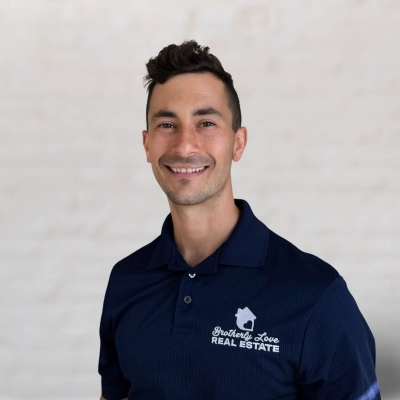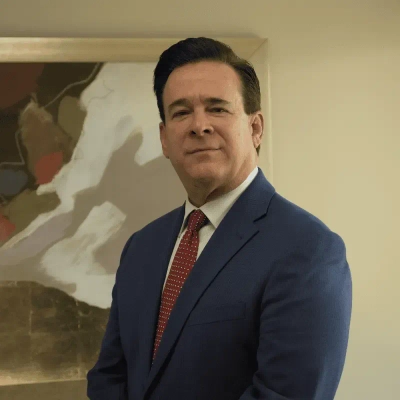12 Ways to Transform Negative Customer Service Interactions into Loyal Relationships
Customer service interactions can make or break a company's reputation. This article explores expert-backed strategies to turn challenging customer encounters into opportunities for building loyalty. Discover how implementing these proven techniques can transform dissatisfied customers into your most vocal advocates.
- Transform Anger into Advocacy with Personal Touch
- Own the Problem Solve It Together
- Listen First Respond with Empathy and Action
- Offer Choices to Empower Frustrated Customers
- Build Trust Through Consistent Proactive Communication
- Take Responsibility with Hands On Problem Solving
- Convert Critics to Collaborators Through Transparency
- Remove Hurdles Provide White Glove Experience
- Shift from Defense to Accountability
- Advocate for Customers Beyond Installation
- Persistence and Professionalism Win Loyal Clients
- Reframe Relationships with Proactive Solutions
Transform Anger into Advocacy with Personal Touch
One of the most memorable turnarounds I've experienced began with an angry email from a customer who felt completely let down by a delayed delivery. Their message was sharp, and to be honest, my first instinct was to go on the defensive. However, instead of replying with policy explanations or stock apologies, I decided to pick up the phone. That small decision—to make it personal instead of transactional—was the turning point.
During the call, I allowed them to vent without interruption. Once their frustration had run its course, I repeated back what I understood: it wasn't just about the delay; it was about feeling ignored and undervalued. Acknowledging that shifted the tone. From there, I explained transparently what had gone wrong and, more importantly, what I was doing to fix it. I offered a faster replacement solution, waived the additional cost, and gave them a direct line to me if any issue arose again.
The real key moment wasn't the discount or the fix—it was when they said, "I appreciate that you actually listened." That was when the tension dissolved and trust began to build. Within weeks, that same customer had not only stayed with us but recommended us to others, saying, "They stand by you even when things go wrong."
What I learned from that interaction is that loyalty is often forged in moments of friction. Customers don't expect perfection—they expect honesty, empathy, and effort. By stepping away from canned responses and treating the conversation like a human-to-human exchange, we turned a potential loss into one of our strongest advocates.
Now, whenever I train teams, I emphasize that the goal isn't to avoid every problem; it's to handle them in a way that makes the customer feel valued. Because often, it's not the original issue that defines the relationship—it's how you choose to respond when the pressure is on.
Own the Problem Solve It Together
I had a client who was frustrated because their digital signage network went offline during a high-traffic weekend, and they were understandably upset. Instead of just offering a generic apology, I walked them through the issue in real-time, showing them exactly what was happening and the steps I was taking to resolve it. I even stayed on a video call while our engineers worked on the fix, keeping them updated every few minutes. The turning point came when I suggested a temporary workaround that allowed their displays to stay partially functional while we resolved the deeper issue. Seeing that we were fully committed to solving the problem—and that I personally took ownership—completely changed their perception. By the end of the conversation, not only did they thank us, but they also expanded their contract to include more locations, citing trust in our responsiveness as the main reason.

Listen First Respond with Empathy and Action
A few years ago, a client came into our Miami law office extremely frustrated. He had called multiple times for a case update and felt ignored. When he finally reached me, he was ready to take his file and walk away. At first, I wanted to explain the delays. We were waiting on records and had not received the documentation we needed. But I paused and listened instead. I let him vent without interrupting. That was the turning point.
Instead of defending our process, I acknowledged his frustration and apologized for how he felt. Then I took full responsibility and gave him a clear timeline of next steps. I followed up personally every week after that, even when there was no significant update. By the end of his case, not only did he receive a favorable outcome, but he also referred two new clients to our firm.
What turned everything around was not just fixing the issue but showing him that he mattered. People remember how you make them feel. In legal work especially, communication and empathy can turn tension into trust. That experience reminded me that a sincere response and consistent follow-through are the foundation of lasting client relationships.
Offer Choices to Empower Frustrated Customers
A memorable turnaround involved a client who was upset about being overbilled due to a system glitch. Rather than simply correcting the invoice, I invited them to a brief Zoom call to explain our billing system and clarify the error. Providing this transparency shifted the conversation. The client felt valued and recognized, rather than just another account.
The key moment came when I offered the client a choice for their refund: a credit toward future services or a cash reimbursement. This control helped turn their frustration into appreciation. They chose the credit, remained with us, and later shared that our approach increased their confidence in our partnership. This experience reinforced the notion that offering customers agency, especially during challenging times, can quickly foster loyalty.

Build Trust Through Consistent Proactive Communication
A patient once grew frustrated after waiting longer than expected for lab results and voiced concerns about being ignored. Instead of providing only an explanation, the response began with an acknowledgment of the frustration and a direct apology. The turning point came when the conversation shifted from defending the delay to offering a solution: same-day notifications moving forward, even if full results were pending. That commitment was honored consistently, and within months, the patient not only remained but also referred family members. The experience showed that loyalty often forms when problems are handled transparently and proactively. The decisive factor was demonstrating reliability after the apology, which rebuilt trust in a way a single good visit never could.

Take Responsibility with Hands On Problem Solving
I don't think about "negative customer service interactions." My business is a trade, and a problem is a problem. The one time I had to repair a relationship and turn it into a loyal one was after my crew left a mess on a client's property. The job on the roof was perfect, but the clean-up was terrible, and the client was furious.
I didn't get on the phone with a corporate apology. I drove to the house myself. I knocked on the door and said, "I'm sorry. We made a mistake. I'm here to fix it." The client was still angry, but when I grabbed a broom and a magnet and started cleaning up the yard myself, the conversation changed. The key turning point in that conversation was when I stopped talking and started working.
The client's anger dissipated immediately. They saw that I was a person who took responsibility for my business. I wasn't just a boss. I was a person who was willing to get my hands dirty. That simple act of taking responsibility turned an angry client into a loyal one who has since referred us to many new jobs.
My advice to any business owner is this: stop trying to repair a relationship with words. The best way to fix a problem is to go to the source and fix it yourself. The most important thing in a customer relationship is trust. The best way to build that is to show a client that you're a person who is committed to a simple, hands-on solution. That's the only thing that matters.
Convert Critics to Collaborators Through Transparency
One instance that stands out was when a client expressed frustration on social media about delayed support during a simulator installation. Instead of responding defensively, we acknowledged the issue publicly and then reached out privately to listen to their concerns in detail. What turned the situation around was inviting the client to a behind-the-scenes walkthrough of our service process, showing them how their feedback could directly improve response times. This shifted the conversation from dissatisfaction to collaboration.
The client not only appreciated the transparency but also began sharing positive updates about their experience online. The key turning point was when they realized we weren't just fixing a problem; we were giving them a role in shaping the solution. That sense of partnership transformed them into a long-term advocate, reinforcing the idea that authentic communication can convert criticism into trust.

Remove Hurdles Provide White Glove Experience
At my last company, I encountered a customer who experienced a series of frustrating issues during onboarding. They were visibly annoyed but still determined to make the tool work for their use case. That was the turning point. The opportunity was still present if I could remove the hurdles.
I listened carefully and mapped out the problems they were encountering. I also considered whether those friction points might affect other users. Based on that analysis, we provided a white-glove onboarding experience to help them get started quickly. We were transparent about what we could and could not solve immediately. I walked them through our roadmap, explained what we could add in the near future, and outlined the specific steps we would take. We even offered a custom workshop to help their team ramp up internally.
All of those small actions, combined with empathy, clarity, speed, and real solutions, turned that frustrated user into a loyal customer. They eventually became an internal champion and helped drive adoption from within their organization.
Now at Supademo, we apply the same approach. We use our own product to educate and support customers. We focus on removing friction, being transparent, and giving them the tools to succeed and advocate for the product internally. That is what builds long-term customer relationships.
Shift from Defense to Accountability
A customer once contacted us, frustrated about a shipment that arrived later than expected. Their tone was sharp, and at first, the conversation felt tense. The turning point came when we stopped explaining and instead acknowledged their frustration without qualification. From there, we offered a specific solution: expedited replacement at no cost and a direct line to a representative should any issue arise again. That moment of taking ownership shifted the dialogue. What began as dissatisfaction turned into appreciation, and within weeks, the same customer placed another order and later shared positive feedback about how we handled the situation. The key was moving from defense to accountability, showing through action rather than words that their trust mattered.

Advocate for Customers Beyond Installation
A month after completing a dashcam installation, we received a call from an irate customer. The camera had ceased recording, and they were convinced it was due to faulty wiring or installation. Immediately, they demanded that we return and rectify our "shoddy work". At that moment, we had two options: hide behind the fine print of the warranty or take responsibility for the problem. We chose the latter, because we've learned that what customers remember isn't who's at fault, it's who steps up.
We scheduled an immediate on-site visit at no charge. We didn't waste time arguing or attempting to troubleshoot over the phone. Once there, it took only minutes to prove the wiring was flawless and the camera itself had failed. Instead of pushing the customer to pursue the supplier, we told them directly, "This is a faulty unit, not a faulty installation. We'll handle everything for you." We took the defective unit with us, managed the warranty claim directly with the supplier, and ensured the client never had to complete a form, wait on hold, or deal with shipping.
As soon as the replacement arrived, we scheduled a priority re-installation and got their new dashcam operational the same day, at no additional cost. The real turning point came when we told the client, "Your problem is our problem. You paid us for a working dashcam system, and we'll ensure you get one, even if the manufacturer is at fault."
That approach completely transformed the interaction. What could have been an unpleasant warranty dispute became an opportunity to demonstrate accountability. The customer left feeling respected and protected. Instead of viewing us as just an installer, they saw us as an advocate they could rely on. Ultimately, that moment of taking responsibility didn't just solve a problem, it built trust and loyalty that will repay far more than the small cost we absorbed.

Persistence and Professionalism Win Loyal Clients
I once represented a doctor who was very impatient and exacting. He expected excellence from everyone around him. In addition to that, he was not always quick to make his own decisions. While shopping for a home for his family, he missed out on one he liked because he couldn't decide if it was right or not. He nearly fired me. We both discussed the pros and cons of that house and the reasons it wasn't quite right, and then, two days later, I took him to a home that met all of his parameters. I negotiated a fair price, and his family still lives in that home today, over ten years later.
Because I was professional, provided needed analytics, and stuck with my client through the ups and downs of those weeks together, he has become my most loyal client. We have worked together on other deals, and he has referred many others to me over the years - including his nanny. High praise indeed.

Reframe Relationships with Proactive Solutions
A client once expressed frustration after missing a grant deadline they believed we should have anticipated. Instead of responding defensively, we acknowledged their disappointment and walked them through how timelines and agency requirements had shifted mid-cycle. The turning point came when we offered to create a customized calendar of funding opportunities tied to their strategic goals, with reminders built in well ahead of deadlines. That proactive solution reframed the relationship from reactive problem-solving to forward-looking partnership. The client not only continued working with us but later referred other municipalities, citing the personalized support as the reason they trusted us.






